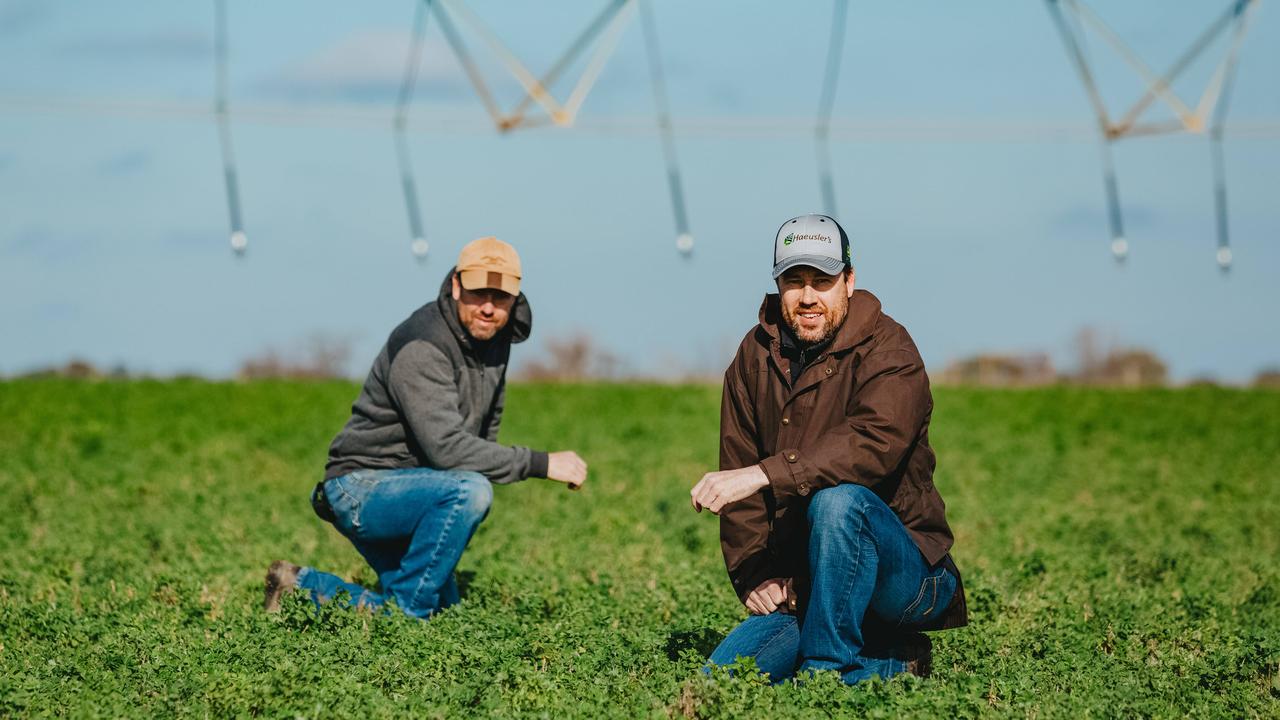By the numbers: Tas-Saff owners are pioneers of the industry
THE Noonans, pioneers of Australia’s saffron industry, explain how their million-bulb operation took off.

ON THE wall of Nicky and Terry Noonan’s home in Glaziers Bay, southwest of the Tasmanian capital Hobart, there’s a picture frame of a dried purple flower.
Not just any flower, but the first Crocus sativus grown by the couple for their Tas-Saff business. It bloomed in 1993, and was the first flower grown for commercial saffron production in Australia.
“Because there were no saffron growers in the southern hemisphere, we had to order 5000 bulbs from the northern hemisphere in 1990,” Nicky says. “It took two and a half years of quarantine and acclimatising those bulbs for us to get our first flower.”
The couple and their 22-year-old son, Patrick, are seen as the most successful saffron growers in Australia, and the main source of information for anyone interested in growing saffron.
The Noonans pioneered the industry, after moving to Tasmania from Sydney, seeking a tree-change.
They opted to grow the untested crop of crocus after paying $14.95 for a 150mg bottle of imported saffron from a gourmet deli.
“After buying that bottle, Terry saw the potential of growing it in Tasmania and did all his research at the library,” Nicky says, admitting neither of them had any farming background before plunging into saffron.
At first they farmed a 1.2-hectare property, but found the clay soil wasn’t ideal. So, in 1998, they moved to a nearby 22 hectares with well-drained sandy loam and mudstone base.
“We offer recipes to all our customers from traditional paella to the more unusual saffron scones,” Nicky says. “This year we even launched our new product, saffron gin.”

1990
The year Nicky and Terry Noonan kicked off their adventure growing saffron.
They started with a “wheelbarrow, spade and $1000 in capital”, buying 5000 Crocus sativus bulbs.
2.5 YEARS
The time it took for the first bulbs, which came from the northern hemisphere, to go through quarantine and then acclimatise to the southern hemisphere. In 1993 the Noonans’ first crocus flower bloomed.
4 SEASONS
Crocus sativus bulbs need four seasons to grow. The flower likes a warm, dry summer up to 40C, early autumn rain, good winter rain and temperatures no lower than -5C, followed by early spring rain. Bulbs are dormant from mid-November to mid-February.
“Tasmania has proved to have ideal conditions for growing the highest quality of saffron, and it is renowned worldwide as one of the premiere locations for saffron production,” Nicky says.
1:6
One mother bulb can reproduce up to six daughters through winter and spring.
Every four years the Noonans dig up the bulbs, clean and separate them, then rest that land.
$60
A 1g bottle of saffron sells for $50-$60.
A smaller 100mg bottle, which will serve six people, sells for $10-$12.
3000KG
About 3000kg of saffron is imported to Australia annually. When the Noonans started their operation in 1990, about 1000kg was brought in every year.
1 MILLION
The couple grows one million flowers a year on 0.4 hectares. These flowers produce about 3-4kg of saffron threads in total.
GRADE I-IV
There are four grades for saffron, with IV the poorest, III, II, and I being the finest quality. Tas-Saff is graded I because the Noonans avoid using chemicals, opting for certified organic pest and fungicide treatments, and pick and process every day.
10KG
Australia’s total annual saffron harvest is about 10kg, produced by about 50 saffron growers across Australia.
2 HOURS
It takes two hours to dehydrate the threads, removing 90 per cent of moisture.
50%
By 2018, half of the Tas-Saff crop will be exported to the Middle East, with the rest sold across Australia from the farm gate, to independent supermarkets, gourmet delis and online. This year the Noonans created their first saffron gin, called Growers Own Saffron Gin, made in small batches by a nearby distiller.
50,000
The number of flowers that can be picked in one day during peak season, with the help of about 10 pickers. March 25 to the first week of May is harvest. The flowers are then taken to an on-farm lab where the three-pronged threads (or stigma) are picked out of the centre, before being dried.


